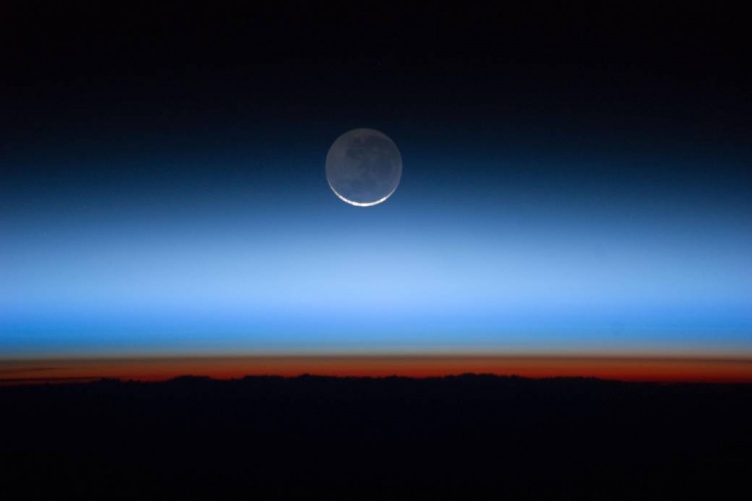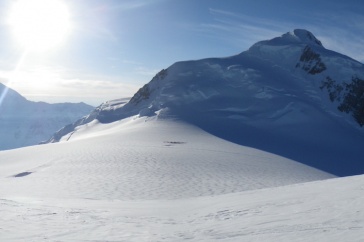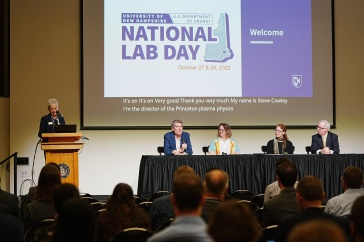
Photo by NASA.
NASA’s latest mission to explore two unusual phenomena in our upper atmosphere will tap faculty and student expertise from the UNH Space Science Center.
Starting at about 60 miles above the Earth’s surface, there is a layer of the atmosphere where things get a little weird: ionized gases build up like horns on either side of the magnetic equator, and wind that causes uneven drag on low-altitude satellites. NASA’s Low-Latitude Ionosphere/Thermosphere Enhancements in Density (LLITED) mission, scheduled to launch in December 2021, aims to study these strange phenomena and the physics behind them.
"We're trying to learn how this portion of space works, because it's an anomaly. Things work a little differently there than in other places in the space environment."
The LLITED team consists of scientists and engineers from The Aerospace Corporation, Embry-Riddle Aeronautical University and UNH. The mission will send a pair of identical small satellites, called CubeSats, into low orbit to collect data for at least one year, though the mission may extend beyond that timeframe. UNH was awarded $110,000 for its part in the LLITED mission.
Jim Clemmons, UNH professor of physics and astronomy, is the lead investigator for one of the three instruments aboard each CubeSat. His instrument, dubbed the Miniature Ionization Gauge Space Instrument (MIGSI), will measure the wind and density of neutral air — the inert gases such as nitrogen and helium that exist in the upper atmosphere. Clemmons oversaw MIGSI’s development and construction while he was working at The Aerospace Corporation before his arrival at UNH in 2018. Since that time, he and graduate student Patrick Fowler have been working on calibrating MIGSI to ensure it works properly. UNH graduate student Diana Swanson will take the lead to analyze the data collected by MIGSI once it’s up in orbit.
“We’re trying to learn about how this portion of space works, because it’s an anomaly,” Clemmons says. “Things work a little differently there than in other places in the space environment. We want to understand the space environment as best we can, and this is an important piece of it, because there’s so much interesting physics that happens there.”
The atmospheric region that LLITED is focused on is the ionosphere and thermosphere. Their altitudes overlap, but they are distinct from one another based on the types of gases they contain: the ionosphere consists of ionized gases, sometimes called plasma, while the thermosphere contains neutral, non-ionized gases. On either side of the magnetic equator, plasma in the ionosphere builds up into horn-shaped structures, which scientists call the Equatorial Ionization Anomaly (EIA). At those same equatorial latitudes, the neutral air in the thermosphere becomes unevenly windy — a phenomenon called the Equatorial Temperature and Wind Anomaly (ETWA). The EIA is of particular interest because it can interfere with communications and navigation technologies here on Earth, but scientists hope that LLITED will also examine the interplay between the two phenomena. LLITED will be the first mission to focus on the physics of the EIA and the ETWA.
Clemmons notes that the thermosphere, with its neutral gases, is much more dense than the plasma in the ionosphere. Given that, “you would think the thermosphere would dictate what happens with the whole system, but it turns out that’s not the case,” he says. “The patterns we see there are almost entirely driven by ionospheric processes.” Plasma is sensitive to electric and magnetic forces, while neutral gas is not, he explains. When the particles of ionized and neutral gases collide, the plasma provides a conduit to transfer that electrical and magnetic energy and momentum to the neutral gas.
“To me, it’s interesting to try to understand the process better and see how that all works,” he adds.
The Institute for the Study of Earth, Oceans, and Space (EOS) is UNH's largest research enterprise, comprising six center with a focus on interdisciplinary, high-impact research on Earth and climate systems, space science, the marine environment, seafloor mapping, and environmental acoustics. With more than $60 million in external funding secured annually, EOS fosters an intellectual and scientific environment that advances visionary scholarship and leadership in world-class research and graduate education.
-
Written By:
Rebecca Irelan | Institute for the Study of Earth, Oceans, and Space | rebecca.irelan@unh.edu | 603-862-0990



















































